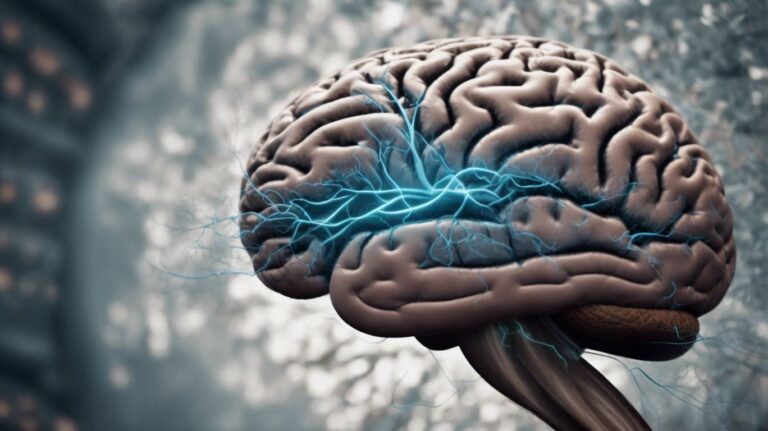Adolescence is a critical stage in human development, marked by significant physical, emotional, and cognitive changes. But what exactly is adolescence, and when does it begin and end?
This article explores the characteristics of adolescence, from the physical transformations to the challenges like peer pressure and identity formation. Discover how parents and adults can support adolescents through communication, setting boundaries, and providing emotional support. Learn about the positive effects of such support on the well-being of adolescents.
Contents
- 1 What Is Adolescence?
- 2 What Are the Characteristics of Adolescence?
- 3 What Are the Challenges of Adolescence?
- 4 How Can Parents and Adults Support Adolescents?
- 5 What Are the Effects of Positive Support on Adolescents?
- 6 Frequently Asked Questions
- 6.1 What is adolescence in psychology?
- 6.2 What are the main characteristics of adolescence?
- 6.3 What are some common challenges faced by adolescents?
- 6.4 How does understanding adolescence in psychology benefit parents and caregivers?
- 6.5 Are there any gender differences in the experience of adolescence?
- 6.6 How can professionals in psychology work with adolescents?
What Is Adolescence?
Adolescence is a crucial transitional period marked by significant physical, cognitive, emotional, and social changes in individuals.
This phase typically begins around the onset of puberty and extends into the late teens or early twenties. It is characterized by rapid physical growth, hormonal shifts, and brain development, shaping an individual’s identity and sense of self.
Identity formation becomes a central focus as teenagers strive to establish their independence, values, and beliefs. Alongside these internal changes, adolescents navigate external challenges such as peer relationships, societal expectations, and educational demands. It is a time of exploration, self-discovery, and growth, laying the foundation for adulthood.
When Does Adolescence Begin and End?
Adolescence typically initiates with the onset of puberty, signaling hormonal changes that lead to physical growth spurts and the beginning of sexual maturation.
During this period, the body undergoes significant changes, with primary and secondary sexual characteristics developing rapidly. Hormones like estrogen and testosterone play a crucial role in driving these transformations, influencing not only physical appearance but also emotional and behavioral aspects. Growth spurt, typically occurring around the age of 12-14 in girls and 13-16 in boys, results in rapid height increase and bone development, marking a crucial phase of adolescent physical development.
- This period also includes cognitive and emotional development, where individuals navigate through identity formation and social relationships.
- These changes continue until the late teens or early twenties, marking the end of adolescence and the transition into young adulthood.
What Are the Characteristics of Adolescence?
Adolescence encompasses a spectrum of characteristics including advancements in cognitive abilities, emotional maturation, social adjustments, and the formation of self-esteem and identity.
During this period, cognitive abilities undergo significant growth as young individuals develop higher-order thinking skills, such as problem-solving and critical reasoning. They start to grasp complex concepts more easily and exhibit improved memory capabilities.
Emotional maturation plays a crucial role in navigating the rollercoaster of feelings that come with adolescence. Teenagers learn to regulate emotions, understand empathy, and develop resilience to cope with life’s challenges.
Moreover, social adjustments become paramount as adolescents seek to establish their place in peer groups, form romantic relationships, and define their own values and beliefs through interactions with others.
Building a strong self-esteem and forging an identity become central tasks during this phase, shaping a sense of self-worth and guiding choices towards a coherent self-concept. It is a period of exploration and experimentation as teenagers balance conformity with individuality.
Physical Changes
Physical changes during adolescence are propelled by hormonal fluctuations, leading to growth spurts, brain maturation, and the development of primary and secondary sexual characteristics.
Hormonal influences play a crucial role in the transition from childhood to adulthood, triggering the rapid growth of bones and muscles, reshaping body proportions. Meanwhile, brain maturation processes impact cognitive abilities, emotional regulation, and decision-making skills, aligning with the societal expectations of increased independence and responsibility. These changes also manifest externally through the enlargement of reproductive organs, the emergence of body hair, and alterations in skin texture, signaling the onset of puberty and the journey towards physical maturity.
Emotional and Social Development
Emotional and social development in adolescence involves navigating peer influence, establishing social competence, experimenting with identity formation, and coping with psychosocial changes.
Peers play a significant role in an adolescent’s life, shaping their beliefs, values, and behaviors. This influence can both positively contribute to their sense of belonging and identity or create challenges and conflicts. As adolescents strive to fit in, they often explore different aspects of themselves, leading to a deepening understanding of their own strengths and weaknesses.
Developing social competence involves learning how to navigate complex social interactions, resolve conflicts, and build meaningful relationships. These experiences contribute to the emotional maturity and resilience needed to face the diverse psychosocial changes during this crucial developmental stage.
Cognitive Development
Cognitive development during adolescence is characterized by improvements in cognitive control, enhanced decision-making processes, the application of fuzzy trace theory, and the bolstering of brain resilience.
During adolescence, teenagers experience significant strides in their cognitive abilities which play a crucial role in their overall development. One notable aspect is the refinement of cognitive control, enabling them to better regulate their thoughts, emotions, and behaviors. This phase also sees enhancements in decision-making processes, where individuals become more adept at weighing options and making informed choices. The application of fuzzy trace theory further aids in understanding how adolescents process information and make decisions based on gist rather than verbatim details, supporting their cognitive development. The reinforcement of brain resilience during this period helps adolescents adapt to challenges and build mental toughness for the future.
What Are the Challenges of Adolescence?
Adolescents face diverse challenges including managing adolescence tasks, navigating peer influence, engaging in risk-taking behaviors, and consolidating their self-identity.
During adolescence, individuals are tasked with the transition from childhood to adulthood, a period marked by physical, emotional, and cognitive changes. The pressure to excel academically and socially, coupled with the struggle to find a sense of belonging, can lead to a myriad of difficulties.
Peer dynamics play a crucial role in shaping behavior and decision-making, sometimes leading to risky behaviors such as substance abuse or delinquency. Amidst these challenges, adolescents are also striving to establish a unique sense of self, grappling with questions of purpose, values, and aspirations.
Peer Pressure and Influence
Peer pressure and influence exert a significant impact on adolescents, especially with the proliferation of social media platforms, affecting their decision-making processes and social interactions.
Research has indicated that peer influence can either positively or negatively shape the behaviors and attitudes of teenagers. In today’s digital age, social media plays a crucial role by magnifying the reach and intensity of peer pressure. Adolescents often feel compelled to conform to societal norms and expectations perpetuated through online platforms, leading to both constructive and destructive outcomes. This constant exposure to curated images and lifestyles can distort their perceptions of reality, fostering feelings of inadequacy and self-doubt. The instant feedback loop of likes and comments can significantly impact their self-esteem and emotional well-being.
Identity Formation
Identity formation in adolescence involves the consolidation of self-esteem, moral values, social competence, and the establishment of a coherent self-identity.
During this period, teenagers navigate various challenges and experiences that contribute to shaping their sense of self.
- Self-esteem plays a crucial role as it influences how individuals perceive their own worth and capabilities, impacting their confidence and decision-making.
- Moral growth is another significant aspect, as adolescents grapple with ethical dilemmas and begin to develop their sense of right and wrong.
- Social skills are honed through interactions with peers, family, and society at large, shaping their ability to communicate, empathize, and forge meaningful relationships.
The creation of a stable self-identity involves introspection, exploration of personal values, and the integration of various roles and identities. Adolescents may experiment with different personas and interests as they seek to understand themselves better and establish a sense of belonging.
- Identity formation is a dynamic process that evolves over time, influenced by internal reflections and external interactions.”
Risk-taking Behavior
Adolescents often engage in risk-taking behaviors due to the interplay of heightened risk perception, the decision-making process, and the evolution of rational decision-making capabilities.
During adolescence, individuals undergo significant cognitive and emotional development, impacting their propensity towards risk-taking.
- Research suggests that the prefrontal cortex, responsible for decision-making, matures over time, affecting the assessment of risks and rewards.
- Peer influence plays a crucial role as adolescents seek social acceptance and validation through risky behaviors.
- Factors such as sensation-seeking tendencies and impulsivity further contribute to their willingness to take risks.
Understanding these dynamics is essential in developing effective interventions and strategies to promote healthier decision-making in adolescents.
Struggles with Autonomy
Adolescents grapple with the quest for autonomy, balancing decision-making responsibilities, self-identity exploration, and emotional development in their journey towards independence.
One of the significant challenges adolescents face in the pursuit of autonomy is the need to make critical decisions that shape their future. This newfound responsibility can bring about feelings of uncertainty and doubt, as they navigate the complexities of balancing their desires with practical considerations. Adolescents often find themselves in a constant struggle to forge their unique self-identities amidst societal expectations and peer influences, leading to conflicts and confusion.
Emotional growth plays a pivotal role during this transformative phase, as adolescents learn to manage their emotions, communicate effectively, and cope with various stressors. The quest for independence further intensifies these challenges, as they strive to establish boundaries, assert their needs, and carve out their own paths in the world.
Pressure to Succeed
Adolescents often experience pressure to succeed academically, socially, and personally, while juggling the demands of adolescence tasks and fostering social competence.
Within the academic realm, young individuals strive for high grades, college admissions, and extracurricular achievements. Socially, there’s pressure to fit in, maintain friendships, and navigate the intricacies of peer dynamics. Personally, adolescents aim to develop their own identities, handle emotional ups and downs, and make important life decisions.
All these expectations can significantly impact their mental health, self-esteem, and overall well-being. To cultivate social competence amidst these challenges, teenagers learn to communicate effectively, resolve conflicts, and empathize with others, paving the way for successful relationships in their future.
How Can Parents and Adults Support Adolescents?
Parents and adults can provide crucial support to adolescents through effective communication, setting clear boundaries, offering emotional assistance, and promoting healthy habits.
Adolescence is a time of significant changes, both physically and emotionally, and having a supportive environment is key to navigating this phase successfully. Listening actively to adolescents’ concerns and being non-judgmental can foster open conversations. Establishing consistent boundaries helps adolescents feel secure while giving them the autonomy to make decisions within those limits.
Offering emotional support by validating their feelings and encouraging healthy ways to cope with stress is crucial. Additionally, encouraging regular exercise, balanced nutrition, and sufficient sleep forms the foundation for a healthy lifestyle during these formative years.
Communication and Openness
Open communication between parents and adolescents fosters trust, enables discussions on social media impact, peer influence, and aids in navigating the challenges of adolescence.
When parents establish a foundation of open dialogue with their teenagers, it sets the stage for addressing critical topics like navigating the ever-evolving landscape of social media. Being able to openly discuss the implications of online interactions and the pressure to curate a perfect image offers adolescents a safe space to share their concerns. Understanding and openly talking about peer dynamics and the influence friends can have is crucial during this formative period.
Setting Boundaries and Expectations
Establishing clear boundaries and expectations assists adolescents in managing adolescence tasks, refining decision-making skills, and understanding accountability.
When boundaries are set, teenagers have a framework to work within, allowing them to navigate the challenging period of adolescence with more clarity and guidance.
- By clearly outlining expectations, parents or guardians provide structure that helps adolescents prioritize their responsibilities and make informed choices.
- Boundaries also serve as a safety net, offering reassurance and guidance when faced with difficult decisions or situations.
- This approach aids in instilling a sense of responsibility and autonomy, shaping teenagers into independent individuals capable of self-regulation.
Providing Emotional Support
Offering emotional support to adolescents bolsters self-esteem, aids in managing adolescence tasks, and provides essential help in coping with mental disorders or emotional struggles.
When adolescents feel supported emotionally, they are more likely to develop a positive sense of self-worth and confidence. This support plays a crucial role in helping them navigate the myriad challenges of adolescence, from academic pressures to social relationships. Teens who receive consistent emotional support often demonstrate better resilience in the face of mental health concerns, such as anxiety and depression. Having a reliable source of emotional support can aid in effective stress management and conflict resolution, contributing to overall well-being.
Encouraging Healthy Habits
Promoting healthy habits, including consistent sleep patterns, assists adolescents in managing tasks effectively, refining decision-making processes, and fostering overall well-being.
Developing a routine around sleep can significantly impact an adolescent’s cognitive functioning, emotional regulation, and physical health. When young individuals prioritize a good night’s rest, they are more likely to concentrate during the day and make sound decisions. Efficient task management skills, such as setting goals, prioritizing tasks, and organizing schedules, aid in reducing stress and enhancing productivity. Fostering overall wellness contributes to a balanced lifestyle, encompassing exercise routines, healthy eating habits, and stress management techniques.
What Are the Effects of Positive Support on Adolescents?
Positive support from parents and adults contributes to enhanced self-identity development, reduced risk-taking behaviors, and improved psychological well-being in adolescents.
Adolescents, in their formative years, seek validation and guidance as they navigate through the complexities of self-discovery.
Positive support acts as a cornerstone, fostering a sense of belonging and acceptance crucial for their identity formation. By fostering a nurturing environment, adults and parents instill confidence and resilience, reducing the likelihood of engaging in risky behaviors. This support network provides a safe space for adolescents to express themselves authentically and address any emotional challenges they may face, ultimately leading to improved mental health outcomes.
Frequently Asked Questions
What is adolescence in psychology?
Adolescence in psychology refers to the developmental stage between childhood and adulthood, typically occurring during the teenage years. It is a time of significant physical, cognitive, emotional, and social changes.
What are the main characteristics of adolescence?
Some of the main characteristics of adolescence include increased self-awareness, heightened emotional volatility, heightened risk-taking behaviors, and the search for individual identity.
What are some common challenges faced by adolescents?
Adolescents often face challenges such as peer pressure, academic stress, body image issues, and conflicts with authority figures. They may also struggle with mental health issues like anxiety, depression, and self-esteem.
How does understanding adolescence in psychology benefit parents and caregivers?
Understanding adolescence in psychology can help parents and caregivers better support and guide their teen through this developmental stage. It can also help them recognize and address any potential issues or challenges their teen may be facing.
Are there any gender differences in the experience of adolescence?
While there are some general patterns and similarities in the experience of adolescence for both males and females, there are also individual and cultural differences that may influence the experience. It is important to understand and respect these differences.
How can professionals in psychology work with adolescents?
Professionals in psychology can work with adolescents through individual therapy, family therapy, group therapy, or school-based interventions. They can also provide support and guidance for parents and caregivers of adolescents.



